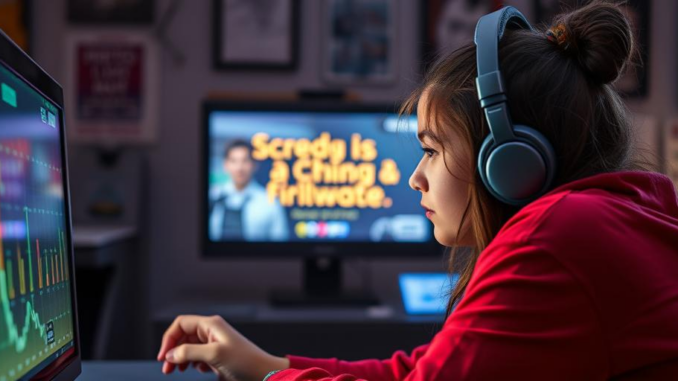
Summary
This article discusses a recent study linking increased screen time in preteens to a higher risk of manic symptoms two years later. Researchers analyzed data from the Adolescent Brain Cognitive Development study, focusing on 10- and 11-year-olds. The study found a correlation between screen activities like social media, texting, videos, and video games with manic symptoms such as inflated self-esteem, reduced sleep, and impulsivity.
Gain peace of mind with TrueNASs 24/7 support from healthcare data storage specialists.
** Main Story**
Hey there, fellow professionals! I wanted to chat about something that’s been on my mind lately – the increasing amount of screen time our kids are racking up and its potential impact on their mental health. A recent study really caught my eye, and I think it’s worth discussing, especially if you’re a parent, educator, or work with young people.
So, this study, published in Social Psychiatry and Psychiatric Epidemiology, looked at over 9,000 kids aged 10 and 11. It’s part of a larger, long-term project called the Adolescent Brain Cognitive Development (ABCD) study. The researchers found that preteens who spend a lot of time on screens, especially on social media, video games, texting, and watching online videos, are more likely to show manic-like symptoms two years down the line. Scary, right?
What Are We Talking About When We Say “Manic Symptoms”?
Okay, so what exactly are manic symptoms? We’re talking about things like feeling super confident (even a bit too much), not needing as much sleep, being easily distracted, talking really fast, having racing thoughts, and acting impulsively. You know, those behaviors that can be characteristic of manic episodes, which are a key part of bipolar-spectrum disorders. Now, it’s important to remember that these symptoms don’t automatically mean a child will develop bipolar disorder. But, here’s the thing: the earlier these symptoms start, the tougher things can be later on. It’s like the early warning light on your car dashboard – you definitely want to pay attention!
Why Is Screen Time a Potential Problem?
Why this link between screens and manic symptoms? Researchers think it might have to do with how addictive social media and video games can be. Think about it: these platforms are designed to give you that constant stream of stimulation and instant gratification, which can mess with the reward pathways in a kid’s developing brain. It’s easy to fall down that rabbit hole, isn’t it? I know I’ve been guilty of losing track of time scrolling through Instagram from time to time. And that’s not all. The study also found that sleep disruption, which often goes hand-in-hand with too much screen time, plays a role too – about 9% of the relationship between screen time and those manic symptoms. Moreover, problematic screen use, particularly social media and video game addiction, accounts for approximately 48% and 58% respectively, of the relationship between screen time and manic symptoms, a recent report suggests.
So, What Can We Do About It?
This study just adds to the growing pile of research highlighting the impact of screen time on kids’ mental well-being. The good news is, we can do something about it. Dr. Jason Nagata, who led the study, really emphasizes how important it is to promote healthy digital habits early on. As he rightly points out, adolescence is a really vulnerable time for developing bipolar-spectrum disorders. So, here are a few things that we can do, and they seem obvious but, are always worth repeating:
- Set Clear Limits: It’s not about banning screens altogether, but setting reasonable, age-appropriate guidelines. Think about specific times and what they can do during those times.
- Encourage Alternative Activities: Get them involved in things that don’t involve screens. Sports, hobbies, creative stuff, hanging out with friends – anything that gets them away from the glowing rectangles.
- Create Screen-Free Zones: Make certain areas of the house, like bedrooms and the dining table, screen-free zones. This encourages face-to-face time and a break from the digital world. It really helps!
- Model Healthy Habits: This is a big one. Kids learn by example. If you’re constantly glued to your phone, it sends the wrong message. Set your own limits and engage in other activities too.
- Open Communication: Talk to your kids about the good and the bad of screen time. Encourage them to share their experiences and any worries they might have.
- Monitor Online Activity: Stay in the loop about what they’re doing online. What platforms are they using? What kind of content are they watching? Who are they talking to? I know it can feel like invading their privacy, but it’s about keeping them safe.
- Prioritize Sleep: This is crucial. Make sure they’re getting enough sleep by setting regular bedtimes and limiting screen time before bed. No phones in the bedroom!
Ultimately, this research gives us a good insight into just how intertwined digital technology and mental health are in preteens. By getting our heads around the possible risks and putting strategies in place to encourage healthy screen habits, we can help protect the well-being of our young people. I think it’s a conversation we all need to be having. As of today, February 23, 2025, this information is considered current but might change as new research becomes available, don’t forget.


So, basically, if I understand correctly, my future descent into madness can be blamed on Candy Crush? Good to know! Seriously though, fascinating study. Maybe we should start prescribing boredom to preteens – it worked for us, didn’t it?
That’s a great point! Prescribing boredom might sound radical, but it highlights the need for balance. We grew up finding creative ways to entertain ourselves without constant digital stimulation. Perhaps re-introducing that skill is key to fostering healthier habits and minds!
Editor: MedTechNews.Uk
Thank you to our Sponsor Esdebe